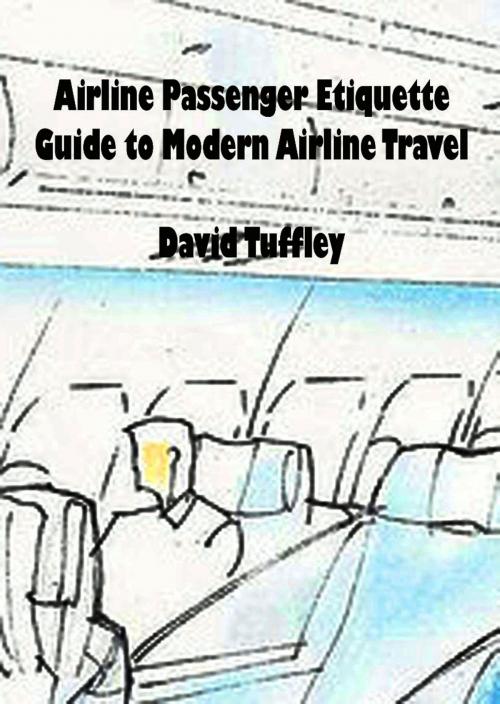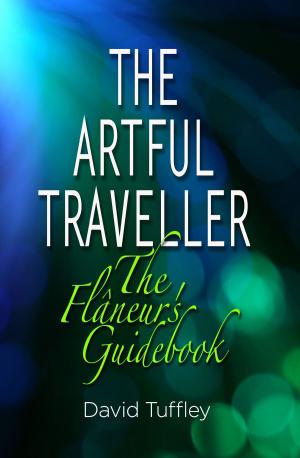Airline Passenger Etiquette: Guide to Modern Airline Travel
Nonfiction, Reference & Language, Transportation, Aviation, Travel, Reference| Author: | David Tuffley | ISBN: | 9781476290737 |
| Publisher: | Altiora Publications | Publication: | April 25, 2012 |
| Imprint: | Smashwords Edition | Language: | English |
| Author: | David Tuffley |
| ISBN: | 9781476290737 |
| Publisher: | Altiora Publications |
| Publication: | April 25, 2012 |
| Imprint: | Smashwords Edition |
| Language: | English |
The 21st Century has seen a rapid rise in the number of people travelling by air. What was once only affordable by the super-rich is now accessible by people of even quite limited means. We have seen the emergence of the budget, no frills airlines. It has never been so inexpensive to travel, and the trend is set to continue well into the foreseeable future.
Applying mainly to people travelling Economy (or Coach) class, this eBook is a how to guide for people wanting to make the experience more tolerable if not enjoyable for themselves and their fellow travellers. Its basic message is common sense and consideration for others. It encourages you to ask yourself before you do anything, how would I like it if someone did this to me? This is a silver bullet formula that works in almost any situation in life.
The psychology of airline travel
There is something about airline travel that brings out the worst in people. The phenomena has much to do with (a) claustrophobia leading to heightened anxiety, and (b) the perceived invasion of personal space leading to attempts to reclaim it.
Claustrophobia
Cramming strangers shoulder to shoulder, elbow to elbow into an aluminium tube for many hours, thinning the available oxygen so it is like being on a 4000 metre (10,000 feet) high mountain, then hurtling that tube through the sky at close to the speed of sound at an altitude of 10 kilometres (6 miles) are the ideal conditions for any sane person to experience some degree of claustrophobia.
Personal space (Proxemics)
Everyone of us as we go through life maintains four concentric zones (like a bulls-eye target) around us; Intimate space (0 to 45 cm), Personal space (45 to 120cm), Social space (1.2 to 3.7 metres) and Public space (3.7 to 8 metres and beyond). These are average figures. Actual figures vary from culture to culture.
It is not difficult to see where the problem with airline travel arises, indeed with any form of public transport where we are crammed together with strangers. People we do not know belong in the public space (no closer than 3.7 metres or 12 feet away from us if we are to feel comfortable. Instead, these strangers are put into intimate (0 to 45 cm) contact with us as our shoulders and elbows unavoidably rub together.
Our instincts are telling us that this is a violation, while our rational minds try to keep our rising indignation under control. If we are not mindful though, our instincts assert themselves in a variety of ways and here is where the problems arise for the people around us.
All of these factors combine to create a sense of discomfort with our present situation and the desire to escape from it as soon as possible. Observe how most passengers stand up as soon as the plane comes to a rest at its destination, even though everyone knows it will be several minutes before anyone can actually get off the plane. The rational thing to do would be to stay seated and relaxed until it is possible to stand up and walk off.
An attitude of gratitude
Gratitude is an emotion that has enormous power, both in making a journey more pleasant and in life generally, but which few people understand in our consumer-driven world that encourages dissatisfaction and complaint.
What is there to be grateful for with economy air travel? Well quite a lot actually. A hundred years ago, travelling several thousand kilometres would have been immensely arduous, time-consuming, uncomfortable and dangerous, not to mention expensive. How fortunate you are to be able to avoid all that for just a few hundred dollars and a couple of hours of your valuable time. Unless we figure out how to beam people from place to place like in Star Trek, it is still the easiest way to get to far-off places.
The 21st Century has seen a rapid rise in the number of people travelling by air. What was once only affordable by the super-rich is now accessible by people of even quite limited means. We have seen the emergence of the budget, no frills airlines. It has never been so inexpensive to travel, and the trend is set to continue well into the foreseeable future.
Applying mainly to people travelling Economy (or Coach) class, this eBook is a how to guide for people wanting to make the experience more tolerable if not enjoyable for themselves and their fellow travellers. Its basic message is common sense and consideration for others. It encourages you to ask yourself before you do anything, how would I like it if someone did this to me? This is a silver bullet formula that works in almost any situation in life.
The psychology of airline travel
There is something about airline travel that brings out the worst in people. The phenomena has much to do with (a) claustrophobia leading to heightened anxiety, and (b) the perceived invasion of personal space leading to attempts to reclaim it.
Claustrophobia
Cramming strangers shoulder to shoulder, elbow to elbow into an aluminium tube for many hours, thinning the available oxygen so it is like being on a 4000 metre (10,000 feet) high mountain, then hurtling that tube through the sky at close to the speed of sound at an altitude of 10 kilometres (6 miles) are the ideal conditions for any sane person to experience some degree of claustrophobia.
Personal space (Proxemics)
Everyone of us as we go through life maintains four concentric zones (like a bulls-eye target) around us; Intimate space (0 to 45 cm), Personal space (45 to 120cm), Social space (1.2 to 3.7 metres) and Public space (3.7 to 8 metres and beyond). These are average figures. Actual figures vary from culture to culture.
It is not difficult to see where the problem with airline travel arises, indeed with any form of public transport where we are crammed together with strangers. People we do not know belong in the public space (no closer than 3.7 metres or 12 feet away from us if we are to feel comfortable. Instead, these strangers are put into intimate (0 to 45 cm) contact with us as our shoulders and elbows unavoidably rub together.
Our instincts are telling us that this is a violation, while our rational minds try to keep our rising indignation under control. If we are not mindful though, our instincts assert themselves in a variety of ways and here is where the problems arise for the people around us.
All of these factors combine to create a sense of discomfort with our present situation and the desire to escape from it as soon as possible. Observe how most passengers stand up as soon as the plane comes to a rest at its destination, even though everyone knows it will be several minutes before anyone can actually get off the plane. The rational thing to do would be to stay seated and relaxed until it is possible to stand up and walk off.
An attitude of gratitude
Gratitude is an emotion that has enormous power, both in making a journey more pleasant and in life generally, but which few people understand in our consumer-driven world that encourages dissatisfaction and complaint.
What is there to be grateful for with economy air travel? Well quite a lot actually. A hundred years ago, travelling several thousand kilometres would have been immensely arduous, time-consuming, uncomfortable and dangerous, not to mention expensive. How fortunate you are to be able to avoid all that for just a few hundred dollars and a couple of hours of your valuable time. Unless we figure out how to beam people from place to place like in Star Trek, it is still the easiest way to get to far-off places.















